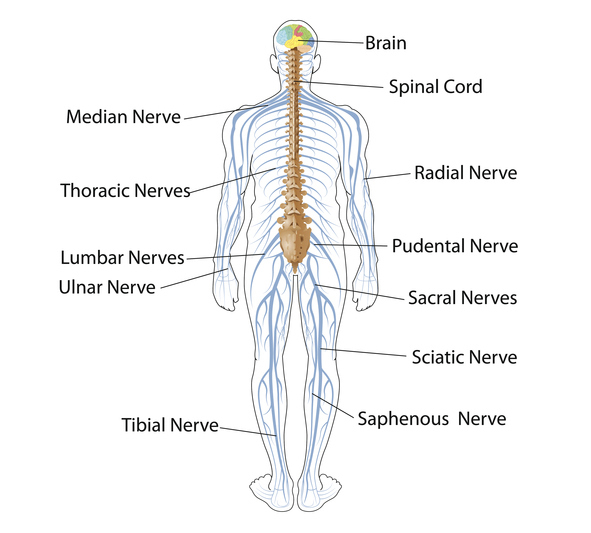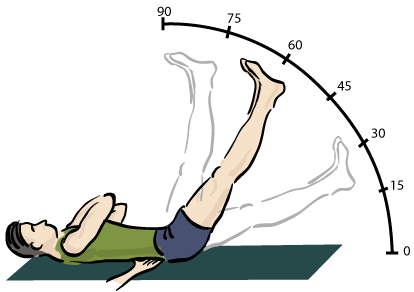
Do you feel burning or tingling in your leg or foot? When does the numbness begin? Which part of the leg do you feel numb? Do you experience any pain or difficulty with walking?
It is true that there are many people who experience leg numbness. And it is also true that most people have no idea which medical specialists they should visit when they feel numbness in the legs.
Many sufferers tend to visit orthopedics, however there might be other possible causes which orthopedics may not be able to find. There are various causes which leads to numbness in the legs, and it may require urgent medical visit.
In this article, neurologist Dr. Yoshiya Hasegawa, who sees many patients suffering from numbness in the legs and feet, provides insights into it along with its symptoms and treatments.
Contents
1. Types of numbness: how to determine if it requires urgent care
Medical specialists are able to identify causes by conducting a medical interview about the symptoms sufferers have. However, there may be some doctors who do not ask important questions to examine the patients’ conditions such as those I am listing below. It is difficult to identify the accurate cause of numbness without appropriate information from the sufferers.
1-1.How does the numbness begin?
It is possible to determine if urgent medical attention is required by observing how the symptom appears: if it begins suddenly or develops gradually.
For example, it may be life-threatening if someone “experiences numbness in legs or feet suddenly upon waking up.” However, it may be harmless if someone “finds a gradual onset of numbness and not sure when it has begun.”
1-2.It makes no difference which leg develops numbness; in one leg or both legs
It should be noted that location of the numbness, whether it is in one leg or both, does not matter whether emergency visit is required.
In fact, when the numbness occurs in the hands, it is possible to determine if urgent medical attention is required by locating where the numbness appears, in one hand or both. If the numbness occurs in one hand, it can be life-threatening while it may be harmless if it occurs in both hands.
Even thought it is difficult to identify whether it requires urgent care from the location of the numbness, it is very important to provide your doctor with information about the symptoms.
1-3. Does the numbness accompany other symptoms?
Numbness is one of the symptoms which stem from neurological system. Numbness involves loss or decrease of sensory function (sensation of touch, heat or coldness), motor deficits such as paralysis (difficulty or inability to exercise), paresthesia (continuous numbness such as burning or tingling sensation.)
Especially when you experience numbness accompanying paralysis or severe pain, it may require immediate medical care.
2. Leg numbness which requires immediate medical visit
Immediate medical visit is required when the factors mentioned earlier are fully met: When someone experiences a sudden onset of numbness in the legs or feet, which accompanies motor deficits and severe pain. It does not matter whether the numbness occurs in one leg or both. Here are some typical diseases which develop numbness in legs and feet.
2-1. Numbness in one leg: Cerebral vascular accident
Cerebral vascular accidents such as cerebral hemorrhage or cerebral infarction is suspected if a sudden onset of numbness occurs in one leg. However, the symptom caused by cerebral vascular accidents frequently accompanies numbness in hands or motor deficits as well. In this case, a head CT will be ordered immediately. However, a head CT will not show any problem when it is taken six hours after a cerebral infarction has occurred. Therefore, a head MRI must be ordered
Only numbness in the legs or feet which accompanies neither hand numbness nor motor deficits seldom occurs in the cerebral vascular accidents.

Immediate medical visit is required when sudden onset of numbness in one leg or foot accompanying motor deficits and severe pain occurs.
2-2.Numbness in both legs: Cervical disc herniation or lumbar disc herniation
Sudden onset of cervical disc/lumbar disc herniation develops numbness in both lower legs and motor deficits. It accompanies hand numbness if it is caused by cervical disc herniation. If it is lumbar disc herniation, only leg numbness occurs. Most commonly, the numbness occurs in both legs. In most cases, one may feel numb in one leg more severely than another leg.
I saw a patient complaining of numbness in limbs and motor deficits the other day. After conducting an examination, I found that the symptom is caused by cervical disc herniation. I transferred him to a major hospital nearby, and he received a surgery after being diagnosed with cervical disc herniation.
2-3.Arteriosclerosis obliterans which accompanies interruption of blood flow
Arteriosclerosis obliterans used to be a rare disease in Japan when I became a doctor some decades ago. Now more patients suffer from this disease due to an increase of elderly population and westernized dietary habits.
Arteriosclerosis obliterans occurs when the artery which conveys blood to legs becomes occluded and disturbs blood flow. One may feel numbness or pain in the legs since supply of the nutrients and oxygen becomes insufficient and it is a common chronic condition for sufferers. However, an acute onset of the symptom causes poor blood circulation in legs. Delayed treatment can have serious consequences causing necrosis which may require leg amputation.
Once the patient is diagnosed with arteriosclerosis obliterans, surgical treatments such as “catheter treatment where a catheter is inserted to widen narrowed blood vessels” or “bypass surgery where bypass for blocked artery is created to improve blood flow” is commonly administered to improve the blood circulation.
3. The causes of leg numbness
There are some causes of leg numbness. The human nervous system begins at the cerebrum, running through the spinal cord and finally reaches the peripheral nerves which control muscles. If there is a problem developed either in the cerebrum, spinal cord or peripheral nerves, it causes numbness.

Our nervous system interacts with the brain and spinal cord
3-1. Numbness caused by a problem in the cerebrum
Blood vessel blockage or bleeding developed in the cerebrum causes numbness. The symptom usually appears suddenly only on one side of the body. However, the site of the lesion needs to be located only in a certain area of the parietal to cause the leg numbness alone. Therefore, we can say that the leg numbness without accompanying symptoms rarely occurs in cerebral infarction or cerebral hemorrhage.
3-2. Numbness caused by a problem in the spinal cord
Spine deformity which compresses cervical spinal cord or lumbar spinal cord causes numbness. This type of numbness develops either acutely or chronically. The symptom appears either in one leg or both.
Lasegue’s sign is displayed when the compression of the lumbar spinal cord is present. Lasegue’s test or Straight Leg Raising Test is conducted where an examiner lifts the extended leg of a patient in a supine position. Lasegue’s sign is determined to be positive when the patient experiences too much pain in the back of the thigh and below the knee to flex at the hip joint. This indicates the presence of compression by a herniated cervical disc.

Lasegue’s test indicates a presence of lesion.
3-3. Numbness caused by a problem in the peripheral nerves
Numbness caused by a problem in the peripheral nerves may often appear in both legs and develop gradually and chronically. Peripheral neuropathy caused by diabetes is a common occurrence.
Sciatica is caused by a problem in the peripheral nerves which many people suffer from. (In some cases, herniated cervical disc mentioned in 3-2 may compress the area where the sciatic nerve begins.) Sciatica is not a “disease” but a “symptom” which causes pain that spreads to the hip and back of the thigh. There are various causes, and spinal canal stenosis is one of the leading causes of sciatica.
4.Other illnesses which cause numbness in the legs and feet
There are other illnesses other than cerebrovascular disease which requires urgent medical attention, herniation, arteriosclerosis obliterans, that cause leg numbness.
4-1.Lumbar spondylosis
Lumbar spondylosis is one of the leading causes among the elderly when it comes to numbness in the legs. Damages to the intervertebral disc and/or deformed lumbar vertebra due to aging lead to numbness or pain in the legs and feet. This shows in their X-ray and they are then diagnosed with lumbar spondylosis.
4-2.Spinal canal stenosis
As the lumbar spondylosis worsens, space within the lumbar spine becomes narrower. This condition is called lumbar stenosis. When numbness or pain is developed in legs and feet along with back pain, lumbar stenosis is to be suspected.
The common symptom of this disease is intermittent claudication. This intermittent claudication causes pain and numbness in the legs and feet when walking or exercising; and it disappears after a short period of rest. Some patients with lumbar stenosis need frequent brief rests when they walk for long periods of time.
* Intermittent claudication is caused either by neurological problems or vascular problems. Neurogenic claudication is considered to be a common symptom of lumbar spinal stenosis while vascular claudication is that of arteriosclerosis obliterans.
4-3.Diabetic peripheral neuropathy
Neurological disorder caused by diabetes tends to affect the peripheral nerves. It develops numbness, cramp, and sharp pains in the limbs. Symptoms experienced at the early stage of the neurological disorder are: tingling or burning feelings in their hands or feet; feeling like they are wearing a sock when they are not; pain or numbness; or neuralgia.
Effective treatment for these symptoms involves controlling and managing diabetes. Medication to treat diabetic peripheral neuropathy has to be administered as well.
*Medication to treat diabetic peripheral neuropathy: Aldose reductase inhibitors is commonly used in the treatment of diabetic peripheral neuropathy in order to inhibit activation of the polyol pathway which is considered to be one of the causes of diabetic neuropathy. Epalrestat is commonly used for the treatment of diabetic peripheral neuropathy in Japan. This drug is proven to have a positive effect based on many clinical cases, and especially proven effective on inhibiting initial symptoms. Some studies show that epalrestat helps improve the function of autonomic nerves, and it is one of the drugs which are frequently utilized for the treatment of diabetic peripheral neuropathy.
4-4.Tarsal tunnel syndrome
The “tarsal tunnel” is a tunnel-like space at the base of the foot, formed by tarsus and flexor retinaculum. The tibial nerve and flexor tendon run through the tarsal tunnel. Tarsal tunnel syndrome is caused when the nerves running in the heel or the sole get compressed or broken, and it develops pain in the ankle or the toe. This nerve which is called “posterior tibial nerve” runs from the calf through the heel to the sole. When this nerve becomes inflamed, it results in numbness or pain in the ankle or toes.
5.Reflex hammer vs. MRI
If you experience numbness in the legs and feet, visiting a neurologist is one of the suggestions since they can assess by using a comprehensive neurological workup involving the brain, spinal cord and peripheral nerves. It is better to visit an orthopedist when the neurologist recommends a visit to the orthopedist as necessary.
When a patient complaining of pain in the back or numbness in the legs sees me after they have visited an orthopedic, I always ask; “Did your orthopedist use a reflex hammer on your knees and ankles?” It seems that there are few orthopedists who utilize this reflex hammer test.
We neurologists always bring a stethoscope and a reflex hammer with us. We can get much information by using this tool. At first, a patient is asked to lie down in a supine position and relax. Then the practitioners will stretch the tendon in the patient’s knee or ankle and tap on it lightly. The tendon makes a reflex. Practitioners examine if this reflex is normal, weaken or increased, or shows difference in each leg.
In some cases, patients who complain of numbness in the legs end up finding diabetes as the cause when the reflex hammer test shows the reflex in their limb is weakened. On other occasions, the reflex hammer test finds that numbness in the legs is caused by compression in the spine when their reflex seems too strong. Orthopaedic practitioners tend to order MRI at once, however the reflex hammer test may be more helpful than MRI depending on the cases. We can form a diagnosis with the reflex hammer just as correctly as an expensive MRI.

The reflex hammer test conducted by a neurologist can provide much information even without MRI
6. Summary
- Numbness in the legs are able to be diagnosed by collecting detailed information about the symptoms.
- Immediate medical visit needs to be sought if sudden motor deficits or acute pain appears.
- I recommend visiting a neurologist first when you have leg numbness, rather than an orthopedist.

